
Megaton 1: November 1983
Editor/publisher: Gary Carlson
Though not a fanzine per se, Megaton came at a time when fanzines, though dwindling, were still being published here and there, giving future pros a place to practice, be published and get the feedback they needed. Editor and publisher Gary Carlson gave a few of the biggest names that place of comfort in Megaton and is still publishing almost 30 years later! On a personal note, Gary gave my character, Feral a home, as well as using me on other characters now and then, and is an supremely nice guy to boot! Onward!
Megaton was never a spot illo/article/occasional strip type of publication. Gary had plans from the very beginning to be a place to showcase sequential work of the highest quality he could assemble. Below, Gary talks about his initiation into the world of comics and his peripheral involvement in fandom.
I started reading comic books when I was five years old, in kindergarten. Mostly DC stuff, as it was 1962. My brother was three years older than me and would pass comics on down to me. We would ride our bikes up to the drug store and buy comics. I started trading with some of his friends and buying from them when I had spare cash and got lots of 1950s stuff. Again, mostly DC.
I didn’t really read a lot of fanzines until I started looking for artists to possibly work with.
I wasn’t part of the fandom community. I was going to college in my pre-Megaton years, studying to be an artist. Animation, cartooning and illustration. I was so busy with going to college full-time and working a 30 hour week that I didn’t have time to pursue fanzines. I met Chris Ecker and we started working on comic strips which we both wrote and he drew. We almost sold one to the LA Times Syndicate but when that fell through I turned my attention to publishing Megaton. There were a lot of better artists than me trying to break into the comic book business, so I switched to writing and publishing.
Going to comic conventions starting in 1978 or so, I was amazed at the good artists out there that couldn’t get work from Marvel and DC. I eventually decided that someone could start a company and hire those guys and compete with the Big Two. And that’s what I tried to do. I came up with a number of different strips and characters: Ultragirl, Megaton, Berzerker, Wizards of War, Vanguard, the Skull, Ethrian with Frank Fosco, and the Sentinel. All in one book – hoped that it would lead to all in their own titles.
We will hear more from Gary soon, but first, let’s start showing some of the high quality work in this initial issue. Above is the cover by Jackson “Butch” Guice and Ken McFarlane, while below you will see a few pages from the first story, Ultragirl: Sins of the Father, by “Salamander Deadfish” (Gary and a few friends wrote the story under this fishy pseudonym), with art and letters by Guice, James Cassara and others. Of the pseudonym, Gary said “On Megaton #1 I was writing what I thought of as Jim Shooter style (from his early Legion of Super-Heroes days) when he would lay out the story as well as writing it. So that’s what the first few scripts for Megaton #1 were – layouts with dialogue. I was rewriting the dialogue before the art went on to the inker. But Butch Guice was turning in inked and lettered pages and I assumed he thought my script fell a bit short and had a friend rewrite some of it. After that, in order to look more professional, I started typing up scripts with full dialogue.”
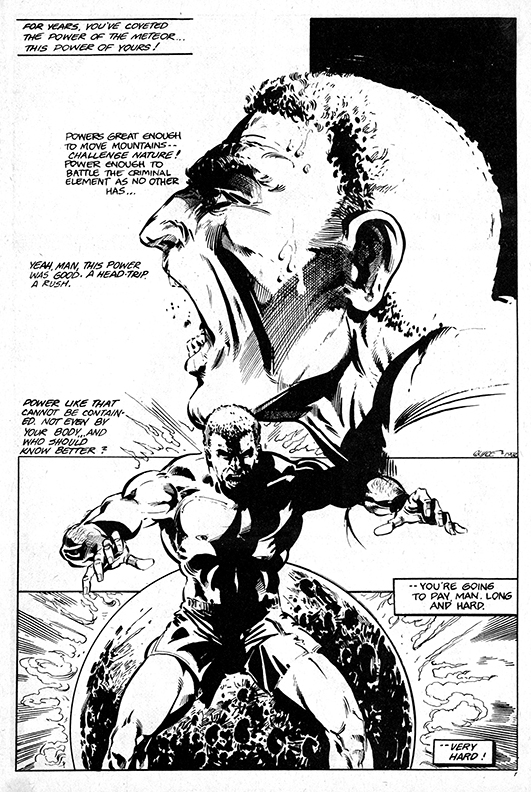

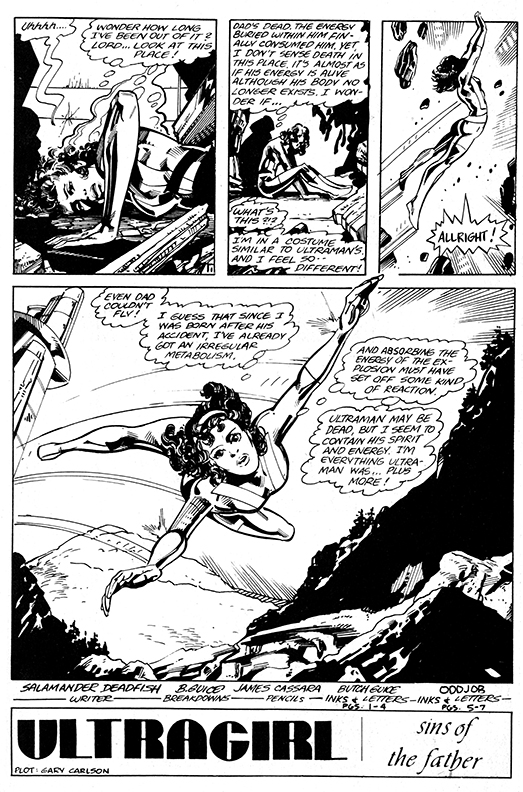
Guice has gone on to do some of the most amazing comic work I have seen…you can see his Instagram page here, where he not only shows his own work, but that of others he admires. Before we leave the world of Ultragirl, though, below you can see actual layouts with script by Carlson, not published previously!


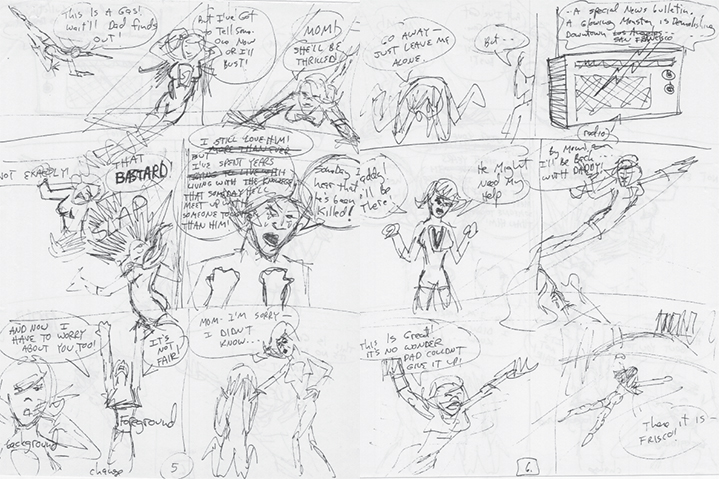
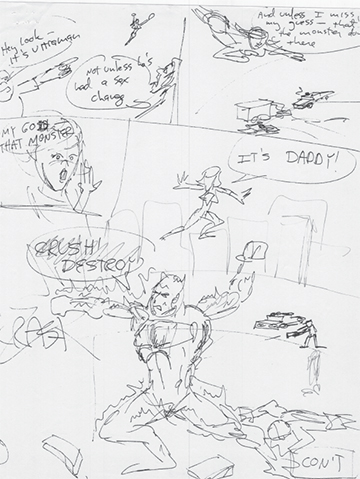
The second story, The City at Sunrise, was written by John Cosgriff and illustrated by the late, great Gene Day. Gary said of this that “John Cosgriff was a friend of Chris Ecker’s, and he had the 4 page story that he had commissioned from Gene Day. He asked if we wanted to print it and I said yes. It had no connection to the rest of the book other than highly professional art.“ Check it out below.
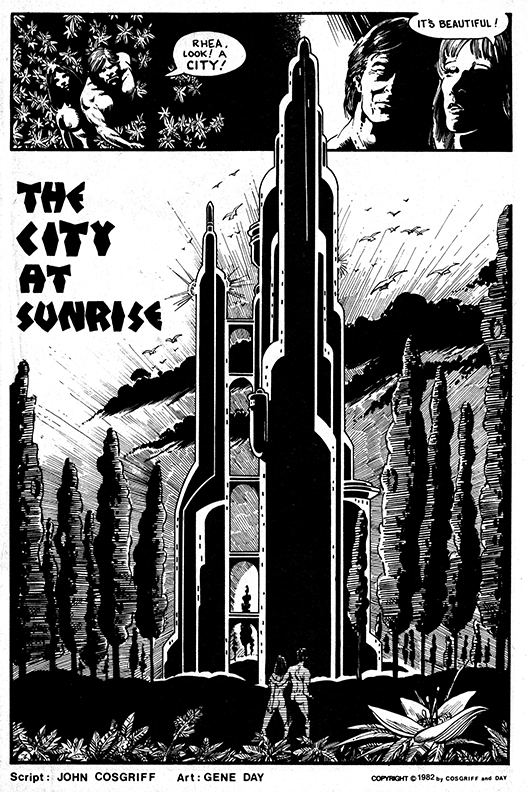

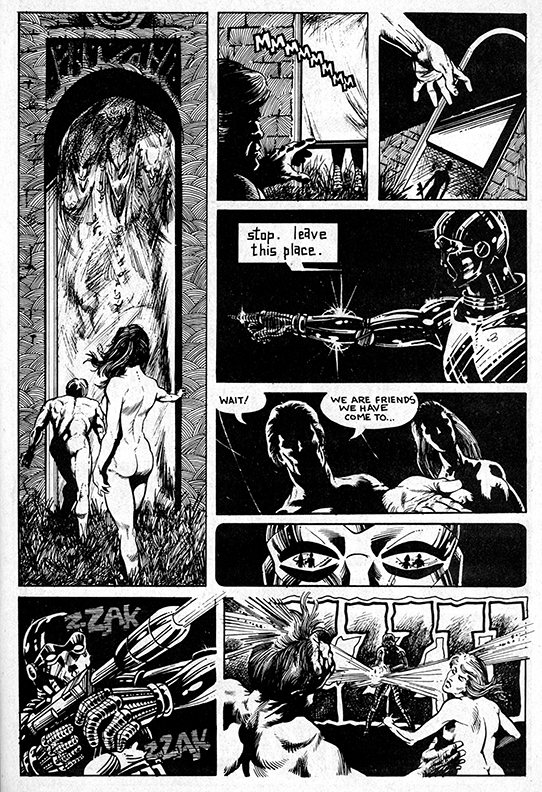
The next story, Megaton: The Pulsar Project, is by Gary, pencilled by Mike “Justice Machine” Gustovich and inked by Sam De La Rosa. Sam actually inked one of the first fanzine pieces I ever had published! Mike really excited Gary, and for good reason, as history has shown. Of that and a few other Megaton stalwarts, Gary says:
I was most excited by Mike Gustovich. He was the first one I asked and he said that he’d draw a story for me. That got me started. I think having worked with Erik Larsen and Rob Liefeld was exciting, especially with their characters Dragon and Youngblood being on the scene way back then. When they helped form Image it put some focus on me and brought me back into comics after taking five years off.
So many of them became friends – either in the short term while we were working together, or guys like Chris Ecker, Frank Fosco, Ed DeGeorge and Dan Reed who are still among my closest friends. But I spent hours on the phone with Rob Liefeld and Erik Larsen, and time at Angel Medina’s folks’ house which was about 30 minutes away.
Working with Richard “Grass” Green was a high point of that time. He was the nicest guy in the world and was fun to work with. He started off by doing lettering for me and then I ran his Wildman and RubbeRoy strips in Megaton and two issues of their own book. He introduced me to Howard Keltner, who eventually sold us his Dr. Weird character so he could continue to be published.
Check out Mike’s site here, where, in addition to seeing his work, you can get commissions! Below you will see a sampling of his story.
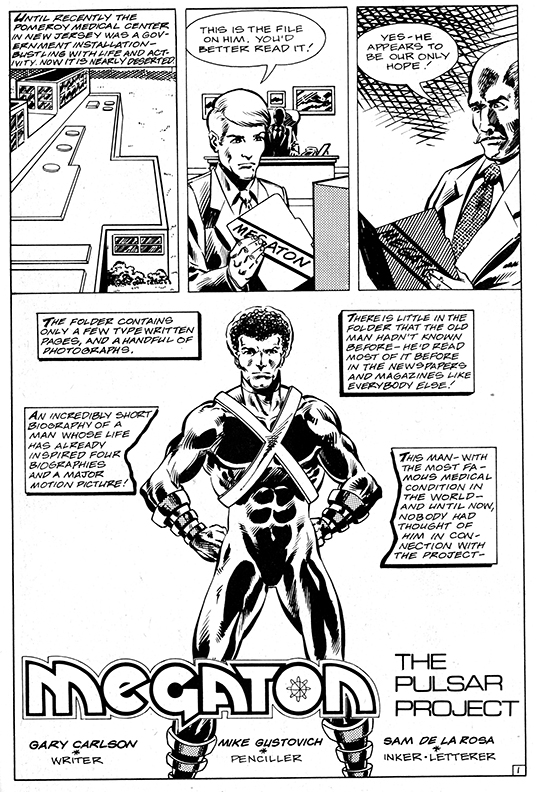
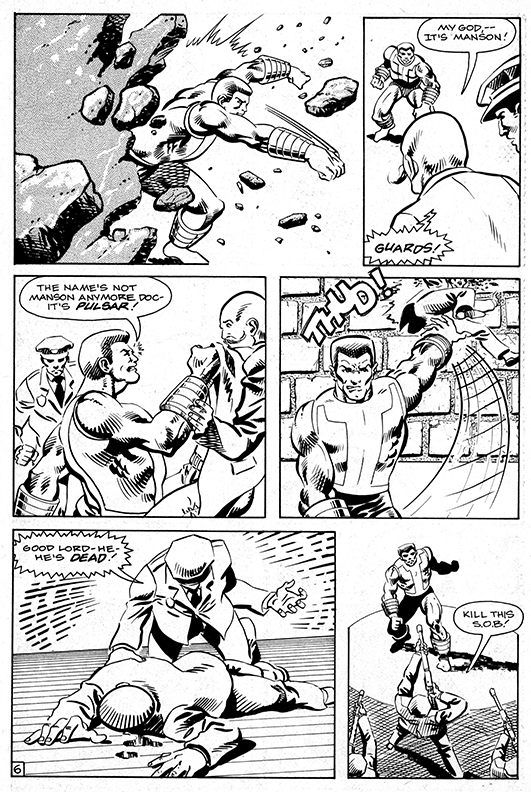
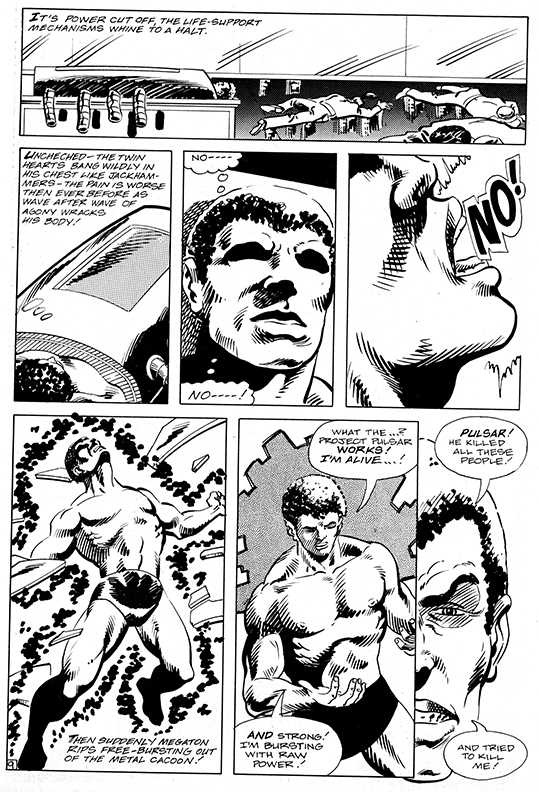
Next up is a story by Gary and artist Ken Landgraf, showcasing Gary’s Bezerker character. I dunno about you, but I see a lot of Wally Wood here! You can see and interact with Ken on Facebook here. Ken was nice enough to pass along a few thoughts of that time, and other subjects, below.
I tried to give the pages a 3D effect by placing layers of props in the foreground in each panel. Gary created the characters. I may have created Anthrax, a sort of bondage character. Wally Wood, Russ Heath, and Sam Glanzman are my biggest influences. I had training from Gil Kane and I loved Reed Crandall’s precision. I used special fonts to do my hand lettering . I had an early Kroy Lettering label machine that i would use on most of the New York City Outlaw comics as well on all the John Jacobs comic books.
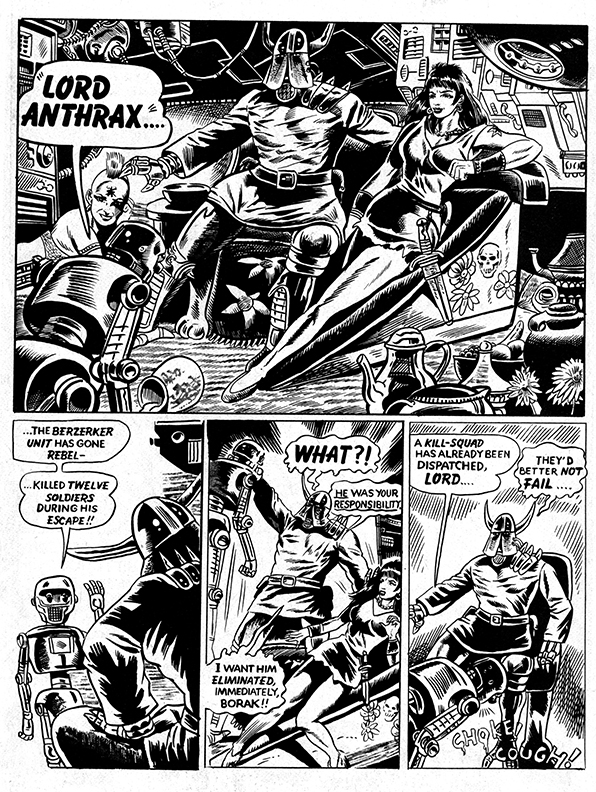
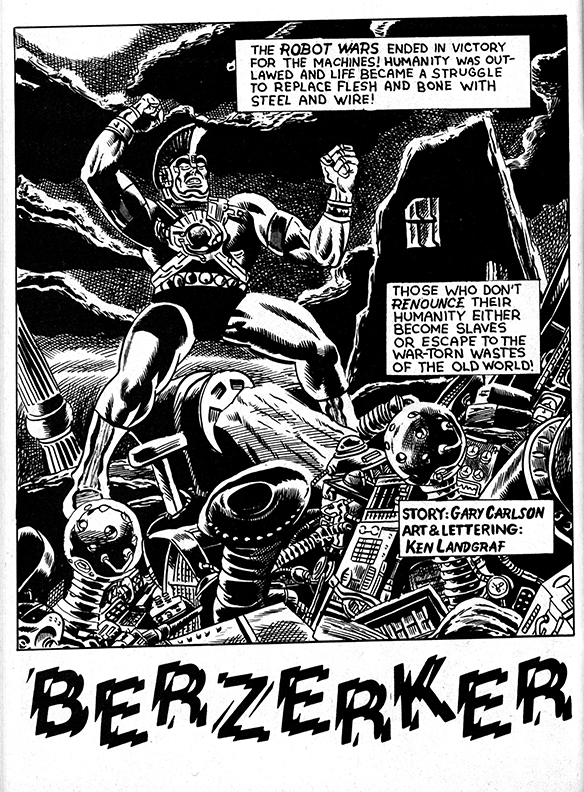
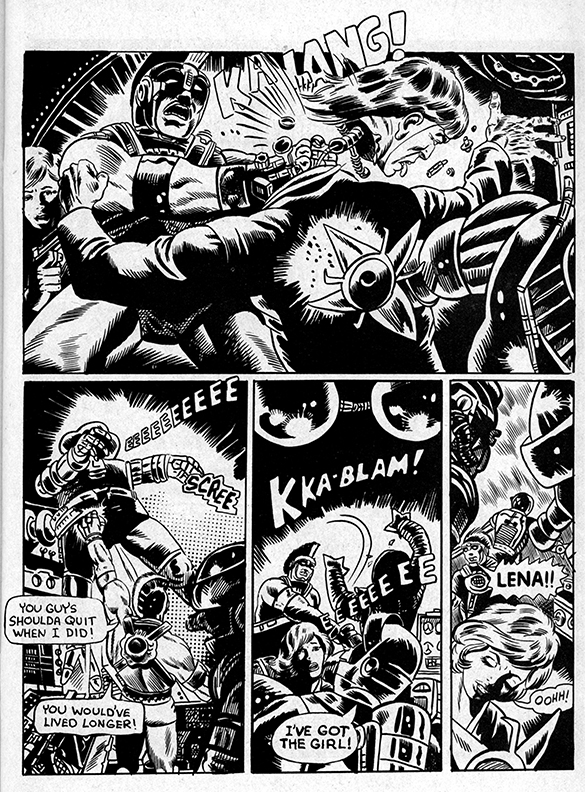
Publishing on a schedule is tough and tension filled for anyone (though Gary is about the most easy going person I can think of), and even more so when you are dealing with sometimes undisciplined artists. Gary talks a bit about this below.
Getting those first two issues out was exciting, and being treated decently by the distributors was a high. It’s funny, but in 1987 we were ready to expand to numerous titles and color interiors, but the independent and b&w explosion sunk Megaton. Eight issues in seven years just wasn’t good enough to build a real fan base.
I was forever replacing artists after one story, when they moved on and up to Marvel and DC (and eventually the newer companies). Most of them were young guys, and not really professionals and I was always waiting months for someone to turn in their story.
Gary did, however, end up with a steady stream of enthusiastic artists. Below, he talks a bit about how he was able to be so fortunate.
I didn’t really follow comic fanzines, but the independent market started springing up in the late 1970s. Cerebus by Dave Sim and Elfquest by the Pinis were both out there, b&w comics on the shelves in comic shops, but I was a super-hero guy and not a huge fan of those titles. Some of the others that influenced me more were b&w magazine sized publications like Starfighters by Ken Landgraf, Galaxia by Rich Buckler, and Enforcers by Larry Houston.
But what impressed me most of all was Power Comics – and especially Mike Gustovich’s Cobalt Blue. I thought Mike’s work was as good as anything in the entire comics market. Cobalt Blue first appeared in 1977, I think – and three years later when I met Mike he was still trying to break into DC and Marvel. That’s when I asked if he’d be interested in drawing a story for me. He said yes and I was in business.
Chris Ecker was my buddy already, and the manager of my comic shop. He’d been drawing comics for fanzines while I was in college for six years drawing assignments. We switched from comic strips to comic books and he was in.
Frank Fosco was probably the first artist I contacted after Mike Gustovich agreed to draw a story for me. Triad was a Chicagoland rock & roll magazine, and Frank had done the cover and some illustrations of his own character, Ethrian, for a special comic book issue in 1977. I loved Frank’s art and had kept the issue. I tracked him down in the Chicago suburbs and he and Ethrian were in.
I scoured comics magazines such as the Comics Buyer’s Guide, Comic Reader and Comics Interview to look for other artists. I saw an ad with art by Butch Guice for the Heroes Aren’t Hard To Find comic shop in North Carolina and was very impressed. I wrote to the shop’s owner, Shelton Drum, who put me in touch with Butch. He agreed to draw a story for me, which turned out to be the Ultragirl origin story.
I was familiar with Erik Larsen’s work because I had ordered copies of the first two issues of his self-published Graphic Fantasy comics from an ad in a magazine (I’m guessing the Comics Buyer’s Guide). He was great! He could write as well as he could draw. In fact, I was so impressed, I didn’t even consider asking him to work for me. I KNEW that he’d be turning pro any day. So how did he end working for me?
I had asked Ken McFarlane to draw a story featuring a a character called the Skull for Megaton #1, but Ken grew frustrated working on it. He called to tell me that he had given up but had passed it on to a guy named Erik Larsen. I kind of freaked out. I was already in awe of Erik, and the Skull was a decidedly second rate character in my mind – and not at all an action based character that someone of Erik’s talents should be used on.
I contacted Erik right away and was surprised to hear that he was interested in working with me. I told him to ignore the Skull and pitched a different concept to him. It was a variation of Superman – a strange visitor from another planet who comes to Earth. An alien named Vanguard!
As we were nearing publication date of Megaton #1, the art on the Berzerker story just wasn’t up to snuff, so I contacted Ken Landgraf and he agreed to redraw the story.
I became aware of Dan Reed because of the Charlton Bullseye. It was a showcase or tryout book published by Charlton Comics in 1981 and 1982, and it existed because had Dan visited the Charlton offices and volunteered to draw for them for free in order to accumulate samples to show at Marvel and DC. Dan drew the first issue featuring a team up of the Blue Beetle and the Question and later returned for issue #7 with a Captain Atom story.
I heard about this somewhere and contacted Dan and offered to pay him for drawing a story for me. Dan was raring to go. His art was equal to or better than the other artists in Megaton #1, and he also penciled and inked the back cover. His version of Berzerker remains one of my all time favorites of the character.
As a plus, I think that Ralph Cabrera was a friend of Dan Reed’s and he agreed to do the aforementioned Skull story.
I wanted to do a b&w comic book. Not magazine size. Not self-covered newsprint books like the Power Comics. I wanted to publish a newsprint comic book with a glossy cover. I contacted Denis Kitchen, the publisher of underground comics through Kitchen Sink Press and he put me in touch with Port Publications in Port Washington Wisconsin, who was his printer. Megaton was off to the races.
Vanguard is up next, the brainchild of Erik Larsen, with input from Gary (also with inks by Sam and letters by Chris Ecker). Erik of course went on to be one of the original members of the Image crew. Here you can see why Erik very quickly went on to be a huge fan fave. His art is clear, his layouts fun and full of action. Keep in mind I covered some Megaton material in the column in the past, with some input from Erik. Check out my site for installment 91.




Following Vanguard is an episode of The Sentinel (Sidekicks), yet another in the seemingly endless supply of characters in Gary’s head. This installment is written by Gary, with pencils and letters by Chris Ecker, and inked by Dan Reed and Ralph Cabrera.
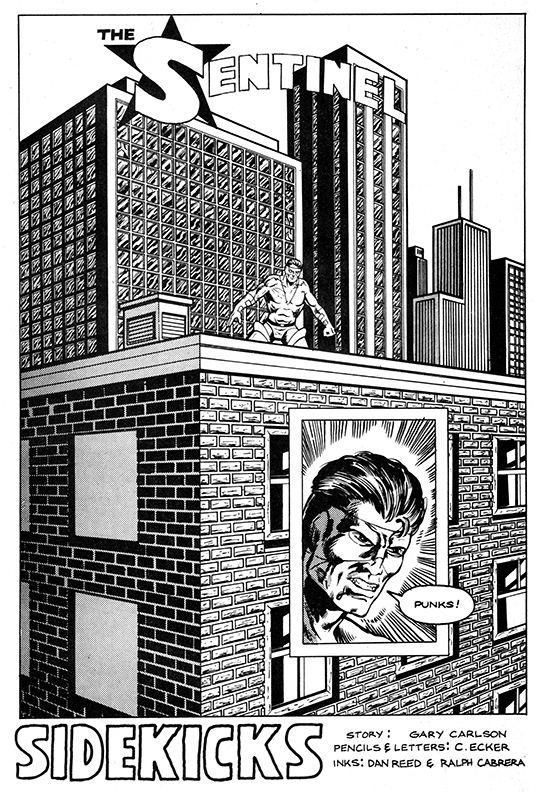
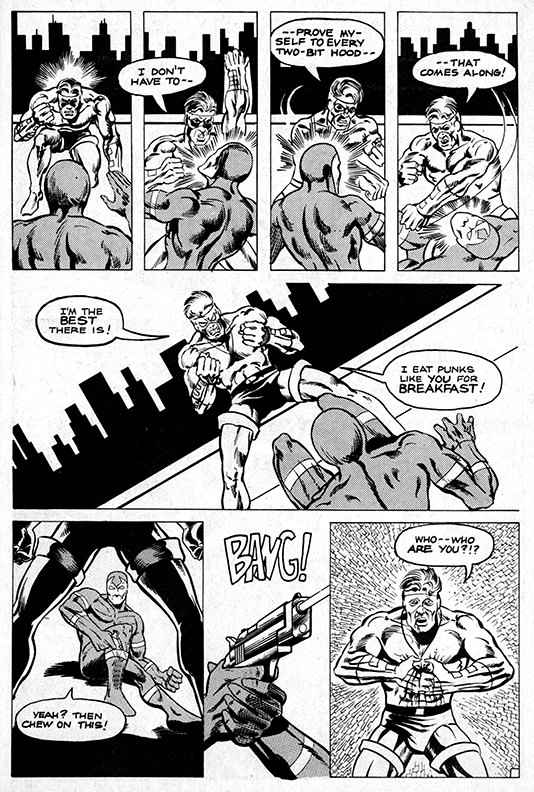
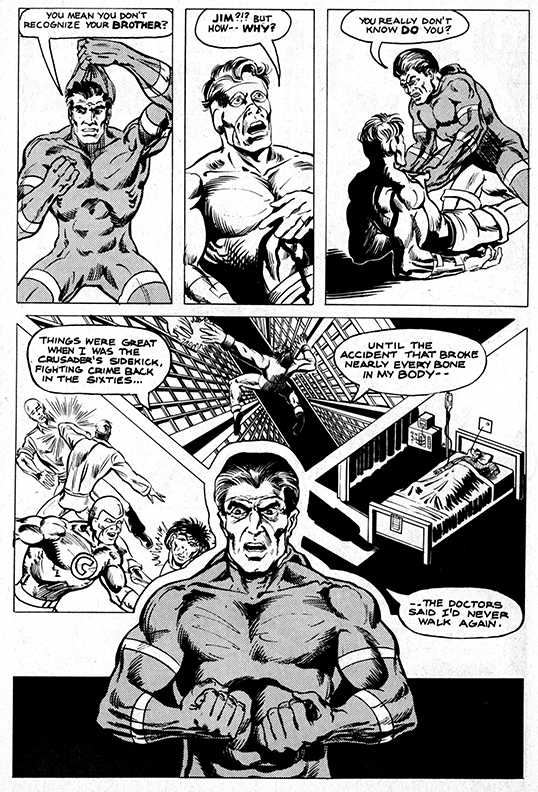
Lurking in the shadows of the next story is The Skull: Night of the Skull, by Gary and artist Ralph Cabrera, with letters by Ecker. I see a little John Byrne in Ralph’s work, but you be the judge!
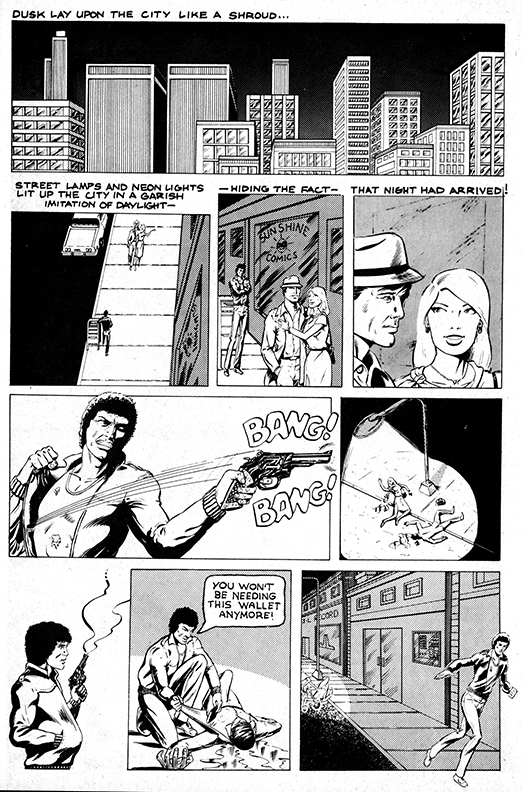


Up next is Ethrian (Gary and artist Frank Fosco). Way back then, when I was dumb, I don’t think I really appreciated Frank’s work…it seemed to just drift by me. But now, Frank’s work then is some of my most favorite. He handles light and shadow (and the drama it creates) really well, and creates some believable alien creatures with volume and character. Gary talks a bit about Frank and some fellow artists by saying “I loved working with them all, and seeing them develop. Like I said, I was looking for guys with professional ability… not looking to do fanzine stuff. For the most part, the artists delivered. I have always enjoyed working with Frank Fosco and Dan Reed. It was exciting to see Rob Liefeld develop. I think he was about 16 when I met him. And I loved working with Erik Larsen. He could write and draw rings around anybody so I just tried to stay out of his way. If I could do it all over again, I’d do a single book with him and maybe we could have attracted an audience.” Check it out below.
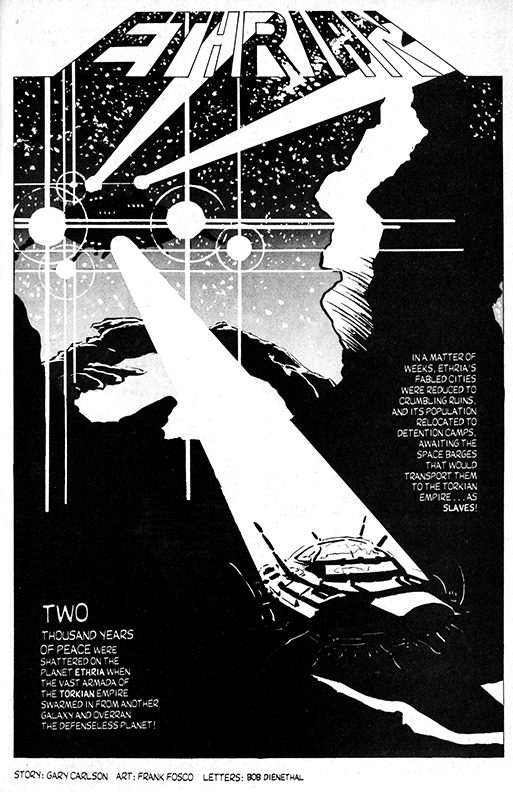
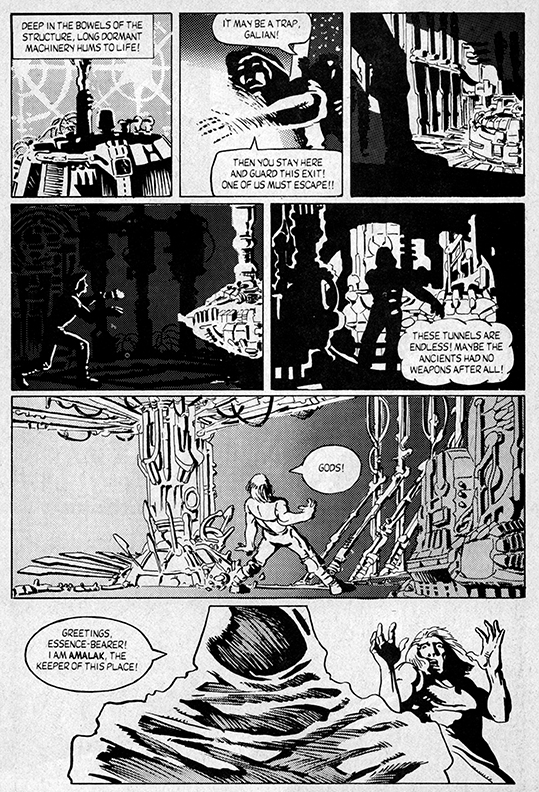
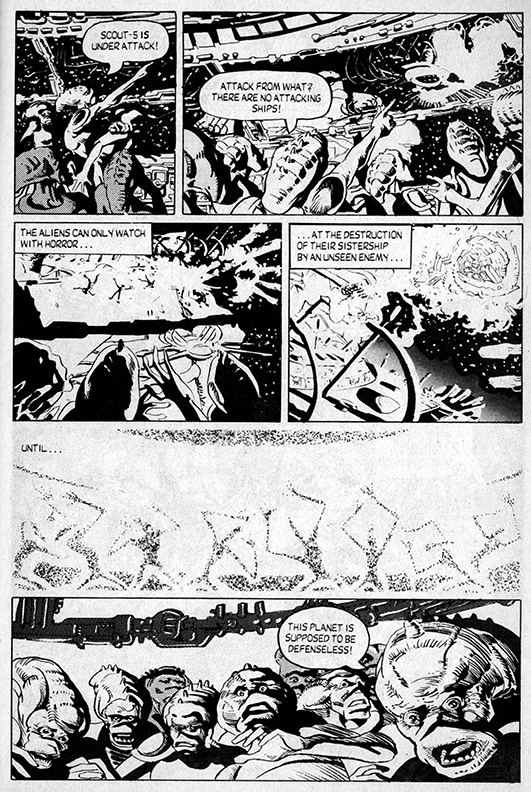
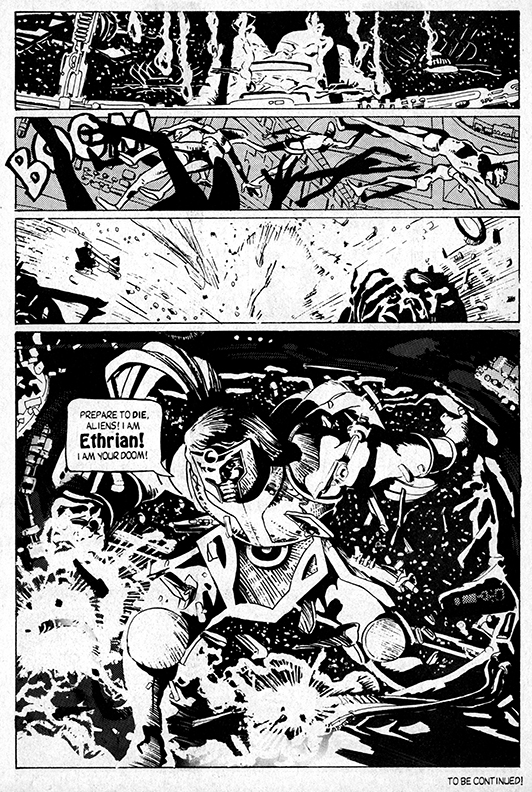
Since Gary mentioned Dan Reed, how apropos his story follows. Wizards of War: The Summoning is next, and the last story of the issue. First, though, Dan was nice enough to answer a few questions through email for me…here is a little info about the beginnings of THE DAN!
The first comic I remember getting was FF#63 by Stan and Jack. I had always been drawing since I can remember, but when I saw that book and managed to convince Mom and Dad to get it for me for a whole 12 cents…. my destiny was sealed at the tender age of seven. After that the flood gates opened and I discovered all the greats at Marvel and DC! Too many to name without fear of leaving some out!
On his initial run ins with fandom, Dan said…
I would go to all the local shows that were starting up in Miami at the time and eventually met C.C. Beck and began helping him out on weekends, starting when I was 13. A local comic book store owner, Joel Fisher also published a fanzine at that time called Universe, and I did the cover for the first issue. Later on I did a few things for Amazing Heroes and a few other fanzines. At 19 I went to work for a Mexican company with a small office doing a character called Zooman. I did about 15 of those.
Of his early influences, Dan cited “Jack Kirby, always my main influence. I was also very influenced by Gil Kane, John Romita, Curt Swan, Carmine Infantino, Neal Adams, Gene Colan and Joe Kubert. My main inking influences were Joe Sinnott and Tom Palmer. As far as writing, it was Stan Lee and Roy Thomas.”
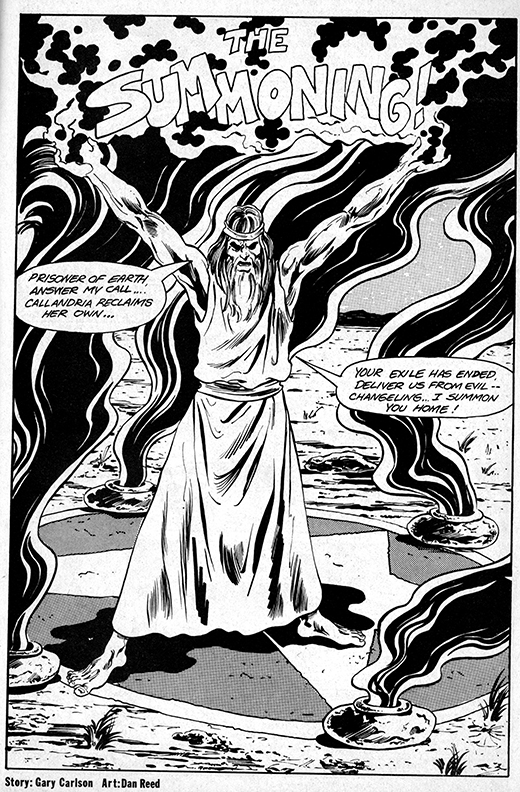

Those fandom contacts can help out later in life. Dan mentions “Gary Carlson, Bill Black and Mike Zeck. Bill had me do a couple of things for his books! Great guy! Mike was terrific as you will see in the next couple of answers to your questions. I had a lot of fun! I loved Gary’s storylines and characters! Gary was always willing to work with me and that meant a lot then and now.” Dan goes into more detail about how Mike Zeck helped him below.
I decided to go to Charlton and offer my work for free if they would publish it, so I could get professional comic book samples to show Marvel and DC for paying work later. I had been showing the big two samples and they would always say “close, but no cigar, Sonny!”. I knew of Mike Zeck from a comic store owner and got a hold of him and he offered to let me stay in his apartment for a couple of days and even took me over to the Charlton building. It wasn’t long after doing the Charlton and Megaton stuff that I showed those and some new samples, getting a four page Captain America story from Jim Salicrup. It was never published but it got me started. After that it wasn’t long before I flew back to New York with yet more sample and got an Indiana Jones story from Archie Goodwin himself…. I was on my way!
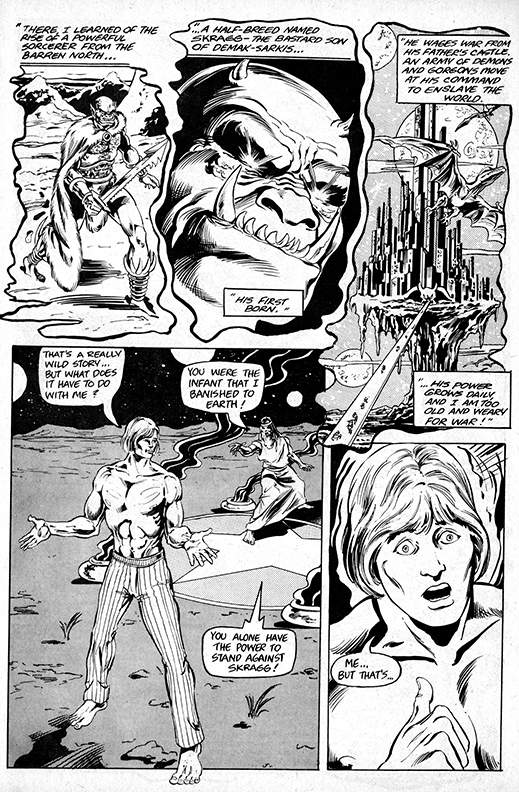
In addition to answering my questions, Dan was nice enough to supply a pdf of the beginnings of an autobiography of sorts, containing the formative comic years and a meeting with CC Beck! I would give you a link here, but it is not working, so get the pdf for that on my website in the Ink Stains section, this installment.
Be sure to check out Gary’s Megaton site here! Below you can read a few final thoughts from Gary.
Back in the Megaton days, I worked full-time 40+ hours a week. I worked in the art and camera department of a big publisher, so learned/knew all about color separations. I was strictly freelance through the 1990s, and was back to a full-time job after 2000 and doing comics on the side again.
Now I am retired and these days I work on Big Bang Comics. When Image Comics started and companies started asking me to do stuff, I ended up at Caliber Press. Chris Ecker and I started the Big Bang material as the predecessors to Megaton – Golden and Silver Age stories and characters. Megaton was envisioned as a new generation of heroes. Ultiman and the Sentinel were two of the old guys on their way out in Megaton #1. Sentinel evolved into the Knight Watchman.
Nowadays, I just try to have fun. I work mostly with artists looking to have fun because there isn’t much money in the print-on-demand books we do. The sales mostly pay for the comp copies of each issue we solicit.
Otherwise, I’m just regaining my health. I was sick through all of 2020 with what turned out to be cancer. I had surgery to remove the Big C and was on chemotherapy this year until a week ago. I am recovering and feeling better and better.
Please check out the Big Bang site here for more Carlson goodness! Before we leave though, see the nice back cover below featuring many of the Carlson characters by Dan Reed.
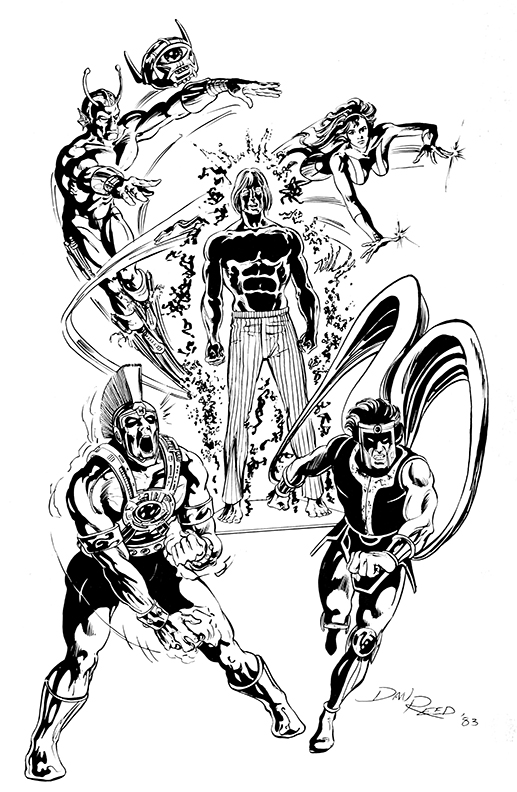
Thanks for this installment obviously go out to the super Gary Carlson for answering some questions via Facebook, as well as Dan Reed and Mark Collins.
Please leave comments if you have the time, it is always nice to have some interaction with the readers…both of you! Tune in next month for another stain of ink!
Ken Meyer Jr.
kenmeyerjr@yahoo.com




I remember Dan Reed and Ralph Cabrera working on their tales back in the day, Those were fun times….
thanks for commenting!
I just discovered this. My first fanzine was Comic Crusader #4 in 1968. I had all of them but some got displaced as I grew up. I wish you could cover 1,2,3, and 17. Great memories.
Hey, me too…if I had them, I would cover them! Thanks for reading!